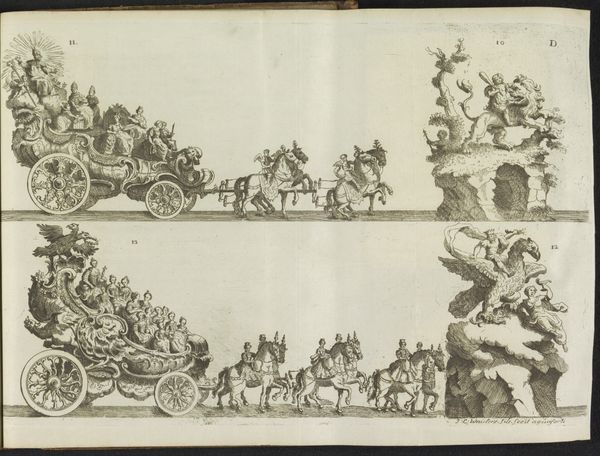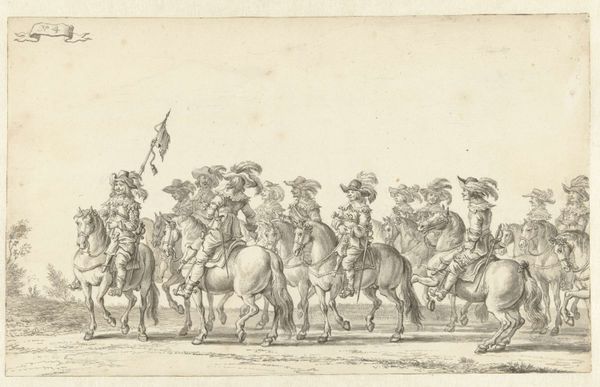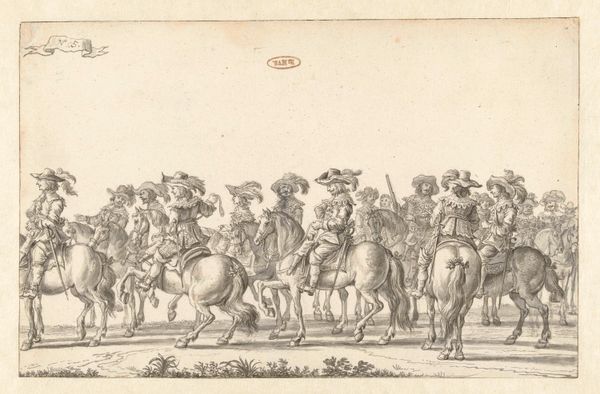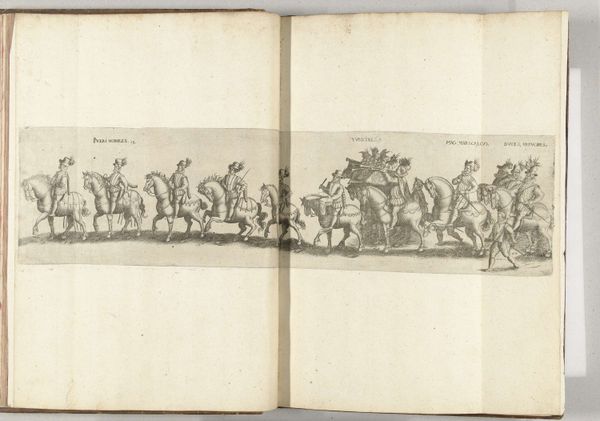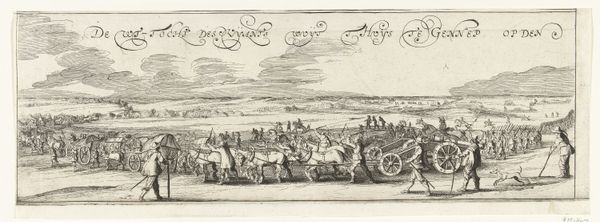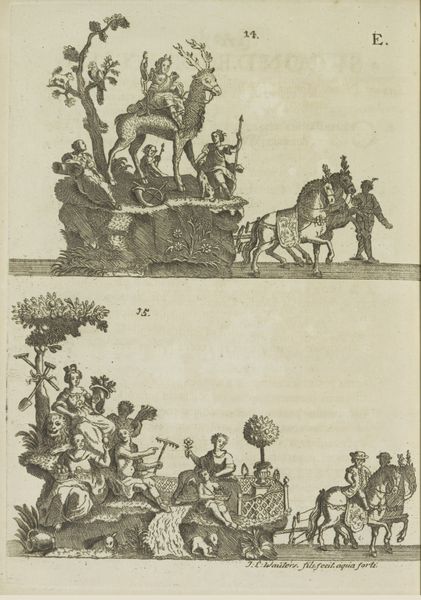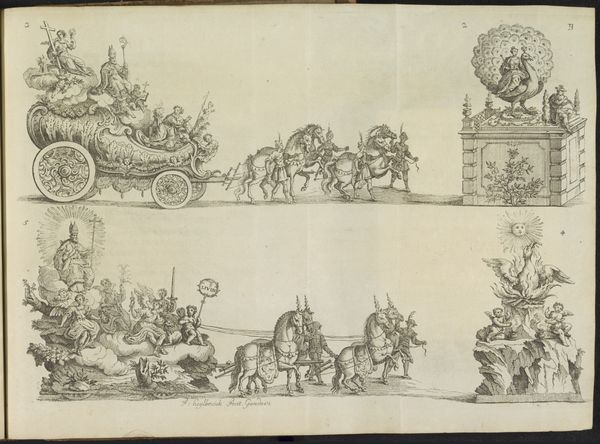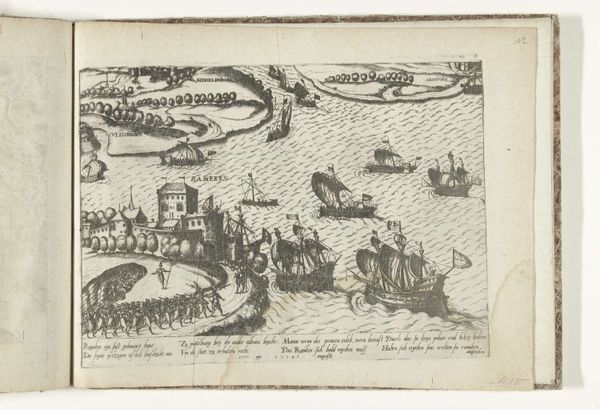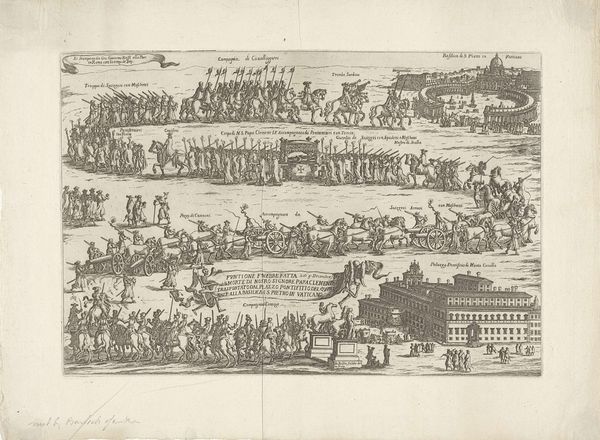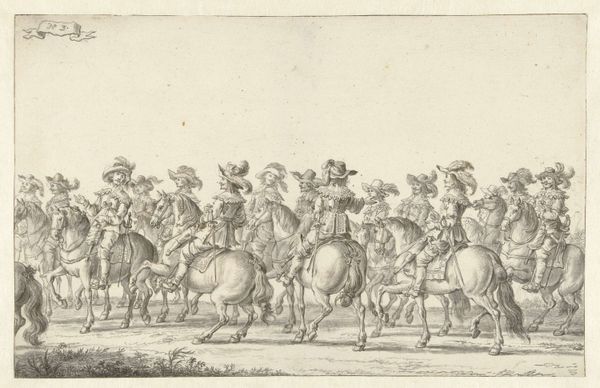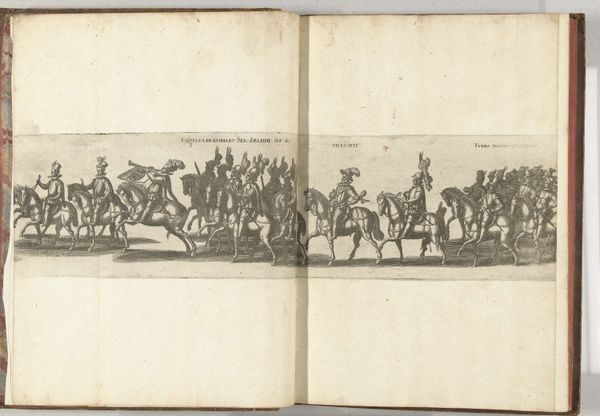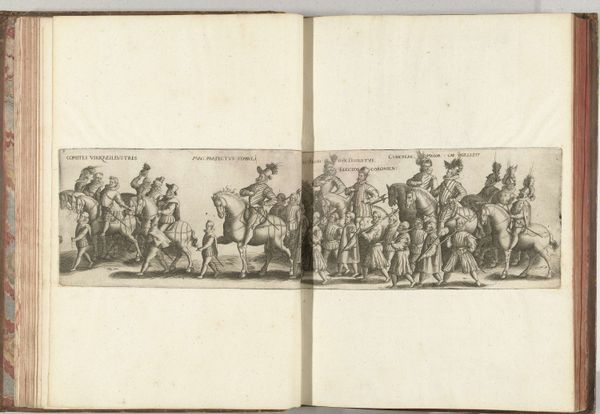
print, engraving
#
baroque
# print
#
pen sketch
#
figuration
#
form
#
line
#
cityscape
#
history-painting
#
engraving
Dimensions: height 175 mm, width 295 mm
Copyright: Rijks Museum: Open Domain
Editor: Here we have Bernard Verschoot’s "Drie praalwagens, genummerd 5-7," created in 1749. It's an engraving featuring three elaborate parade floats. The detail is incredible, almost like looking at architectural plans! What story do you think this piece is trying to tell? Curator: This print, and others like it, acts as visual propaganda. Think about the era – 1749. Power was performed through spectacle. These floats, paraded through the city, weren't just entertainment; they were carefully constructed displays of wealth and authority. Who do you think such displays are meant to impress? Editor: I guess it’s the general population, maybe to instill a sense of awe, respect or maybe even… fear? But were they really effective? Did the everyday person really buy into this? Curator: That’s the key question, isn't it? Art like this doesn't exist in a vacuum. We must analyze it alongside other texts and accounts from the period to get a clearer understanding of how different groups responded to these power displays. Were there dissenting voices? Were these parades seen as a waste of resources when people were struggling? The Baroque style itself, with its extravagance, can be seen as either celebrating triumph or masking deeper social inequalities. Editor: That’s interesting! It’s more than just a pretty picture then; it’s a battleground of ideas. Curator: Exactly. By looking closely at the symbolism within the floats and understanding the socio-political context, we can begin to unpack the complex messages being conveyed and consider the diverse responses they might have elicited. Think of this as visual rhetoric, actively shaping public opinion. Editor: So, these aren’t just celebrations; they’re statements of power, wealth, and control, carefully crafted to influence the masses. Wow, I will never look at a parade the same way! Curator: That's the power of art history. It allows us to see the past not as a series of dates and names but as a dynamic struggle of ideologies made visible through art.
Comments
No comments
Be the first to comment and join the conversation on the ultimate creative platform.
